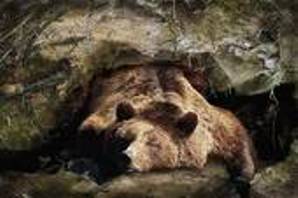Hibernation Tactics: Difference between revisions
(Noting prevelant survivor behavior. I will continue adding to this tomorrow.) |
|||
| Line 56: | Line 56: | ||
[[File:Secret room.jpg|left|300px]] | [[File:Secret room.jpg|left|300px]] | ||
Employers of Hibernation Tactics capitalize on the [[Inactive]]ity mechanic that is inherently built into Urban Dead to completely avoid the destructive force of the zombie siege, and to wait out occupation of the area. Unlike in River Tactics, employers of Hibernation Tactics, do '''not''' monitor in-game communication of any kind. | Employers of Hibernation Tactics capitalize on the [[Inactive]]ity mechanic that is inherently built into Urban Dead to completely avoid the destructive force of the zombie siege, and to wait out occupation of the area. Unlike in River Tactics, many employers of Hibernation Tactics, do '''not''' monitor in-game communication of any kind. | ||
==March of the Dead== | ==March of the Dead== | ||
Revision as of 22:32, 8 May 2011
| Survivor Tactics |
| The information on this page or section discusses a survivor strategy. |
| ||||
Introduction
Hibernation Tactics are a broad range of strategies which seek to gain an advantage over zombie horde and mega-horde incursions through avoidance. Borrowing heavily from concepts cultivated in Ninjutsu, Practitoners of Hibernation Tactics do not directly conflict with the thrust of enemy strikes, instead exploiting the built-in inactivity mechanics & the revivification process to survivor advantage.
Conceptually, Hibernation Tactics are simply any plan that uses extreme methods of avoidance of the enemy as a positive characteristic. There are similarities to River Tactics and DIRT:NAP, as it is the extreme edge of avoidance tactics, and is is the direct opposition to Dam Tactics and meat-shield tactics (see below). These tactics, employed together, create a powerful survival tool.
There was a turtle by the name of Bert
and Bert the turtle was very alert;
when danger threatened him he never got hurt
he knew just what to do...
He'd duck! [gasp]
And cover!
Duck! [gasp]
And cover! (male) He did what we all must learn to do
(male) You (female) And you (male) And you (deeper male) And you!'
[bang, gasp] Duck, and cover!'
- Duck and Cover civil defense film, 1951
Analysis of Defense
He who knows when he can fight and when he cannot will be victorious. - Sun Tzu
Zombie hordes move in concentration to their specified targets. In small scale hordes, they may focus on specific buildings or complexes such as Malls. Larger hordes and mega-hordes migrate from suburb to suburb, corroding everything in their path, laying waste to the entire area. They move in large masses, a rolling wave of destruction that consumes everything.
There are many tactics employed by survivors to effectively hold off a zombie assault (See How To Win A Mall Siege for defensive techniques, and when they are more appropriate than Hibernation Tactics). The effectiveness of these tactics relies on how long a survivor can sit in a building before the horde destroys it. If the AP used to erect defenses is insufficient to counter the level of AP being used to destroy them (bearing in mind that building barricades is inherently easier than destroying them), breaches occur. Once breaches occur, then some AP is needed to eliminate any invading zombies as well as sealing the breach. Should zombies successfully make a breach and ransack a building, all zombies inside the building must be killed, and the building repaired, before the barricades can be erected again.
While Hibernation Tactics advocates playing dead, or hiding in plain sight, it has been proven that coordinated and dedicated survivor efforts can withstand the onslaught of a horde. This strategy of avoiding the zombie threat is sound on a number of levels, but in some circumstances a redeployment is counter productive; group leaders must gauge their own circumstances. Survivors do not need to flee from every pack of zombies, but it is important to note that whenever a defensive situation arises where survivors are spending actions to barricade and zombies are spending actions to tear down barricades the AP on both sides cancel each other out (unequally).
Directly opposing zombie concentrations is a dangerous proposition, and requires an investment of AP on behalf of the survivor population. Without superior numbers and vigilance, it is foolish to weather a siege.
Zombies don’t Can Hold Territory
Much like River Tactics, Hibernation Tactics also capitalizes on a phenomenon of zombie ‘society’ – congregation. Zombies form packs and hordes and use their numbers to crack safehouses and feast on their inhabitants. Zombies form packs and hordes and use their numbers to crack safehouses and feast on their inhabitants. Ironically, this is an advantage for survivors. The larger the horde, the smaller the affected areas and the more traceable and predictable the threat.
However, what do you do when everything is being wrecked, and zombie hordes are spreading out to cover entire suburbs?
Employers of Hibernation Tactics understand that a building is going to be breached, if a zombie horde really wants to get in, they are going to get in. They know that multiple suburbs can be wrecked, with streets frequently patrolled, and ruins held or turned into Pinatas.
Hiding In Plain Sight
O divine art of subtlety and secrecy! Through you we learn to be invisible, through you inaudible and hence we can hold the enemy's fate in our hands. - Sun Tzu
Employers of Hibernation Tactics capitalize on the Inactiveity mechanic that is inherently built into Urban Dead to completely avoid the destructive force of the zombie siege, and to wait out occupation of the area. Unlike in River Tactics, many employers of Hibernation Tactics, do not monitor in-game communication of any kind.
March of the Dead
"Duck & Cover"
Employment of Hibernation Tactics around Malton
If you look at the Survivor-Zombie Imbalance, there has been several times when these forms of tactics were used on the large scale by multiple groups; typically when survivor numbers dramatically decrease.
- March of the Dead - In 2008, a group of players from the Something Awful (SA) forums formed a zombie group called The Dead, who had the aim of killing each and every last survivor in Malton.
- Monroeville - In 2008, a second city had come out, where players only had one life (as there were no revivification syringes to bring them back to life), and staying alive proved to be very difficult. This tactic was extremely common for survivors and zombies alike until Kevan disabled inactivity in that city.
- March of The Dead 2 - In 2011, a group of players from the Something Awful (SA) forums reformed their zombie group, and were nicknamed The Dead 2.0, who had the aim of killing each and every last survivor in Malton.
Optional Wiki Page Tag
Feel free to add this anywhere on your personal or group page to show your support!
| Supporter of Hibernation Tactics | |
| I become the void. |
Simply paste the code below anywhere on your Wiki page:
{{SHibernationTactics}}
-or-
 |
Hibernation Tactics Supporter |
| This User or Group supports Hibernation Tactics. |
Simply paste the code below anywhere on your Wiki page:
{{Hibernation Tactics}}



